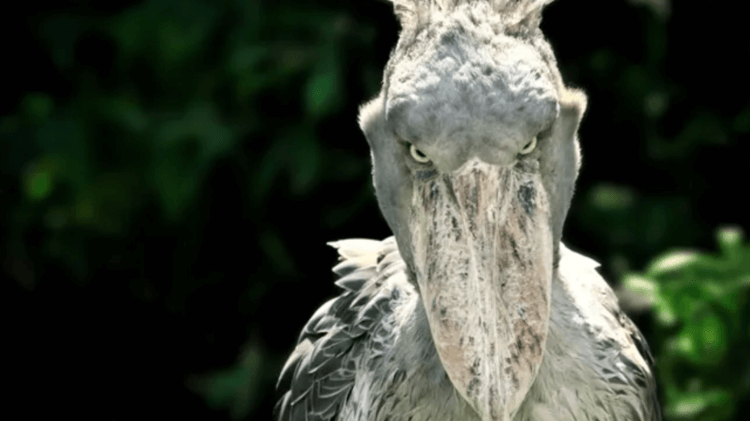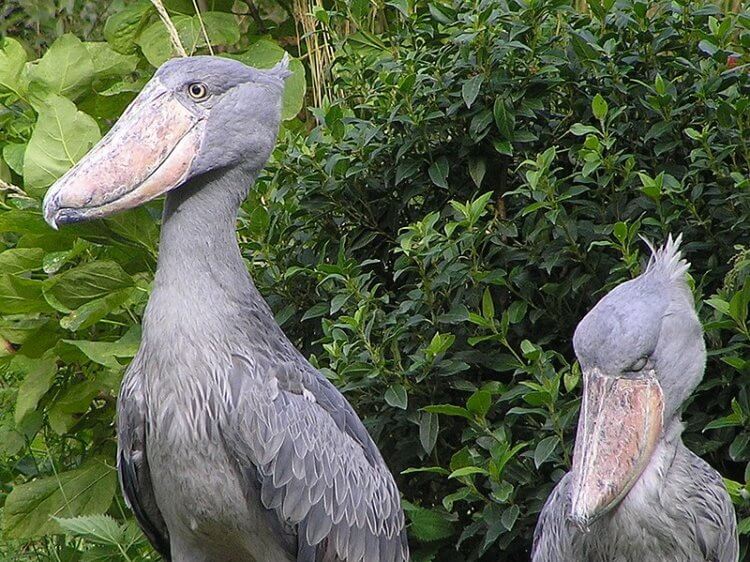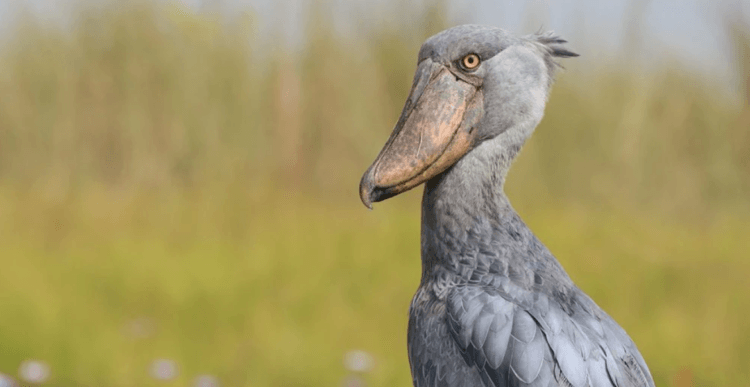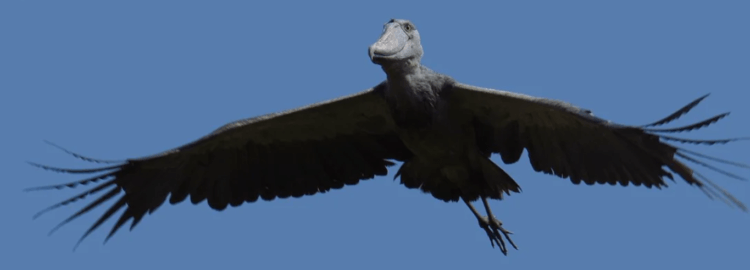There are about 10 thousand birds in the world, the appearance of most of which corresponds to our ideas about birds. However, among them there are those that are more similar to some kind of fairy-tale or prehistoric creatures that lived on our planet millions of years ago. The most striking example is the shoebill — a one and a half meter bird with a menacing appearance and an intimidating powerful beak, recognized as the third largest in the world. The appearance of this bird is quite consistent with its lifestyle — she is a predator that ambushes her victims. Even small crocodiles become its prey.

Shoebill (Balaeniceps rex) has several other names — it is known as the royal heron and shoebill. The bird received this name because of the special shape of its beak, which resembles a shoe. It is very powerful and disproportionate to the size of its head – its length reaches 30 centimeters.
The general body shape of the shoebill resembles that of a stork, but its genetic data are more similar to pelicans, which are its closest relative. The whalebill is the only representative of the genus Balaeniceps. Its ancestors from the order Pelecaniformes appeared at the end of the Cretaceous period (145–66 million years ago).

The head shape of the Shoebill resembles a pterosaur
The bird has a gray back, a white belly and a small crest of feathers on the back of its head, which makes its vaguely similar to a pterosaur. By the way, let us recall that according to the latest data, the evolution of birds occurred much earlier than scientists expected.
Where and how does the Shoebill live
Shoebill can only be found on the African continent. These birds live throughout the upper Nile basin, as well as along its tributaries and in the reservoirs of the Rift Valley. That is, the habitat area is quite extensive, and the area coincides with the area of papyrus thickets and lungfish. The most numerous populations live in South Sudan.

Shoebills live only in Africa
The bird is sedentary, so most often it lives its entire life in the area in which it was born. For life, she chooses hard-to-reach, impassable and inaccessible areas. However, sometimes the shoebill makes seasonal flights between nesting and feeding areas. It should be noted that they are good fliers and can often be seen soaring over their territory.
Shoebills are generally solitary, but nest in pairs and lay up to three eggs in a clutch. True, due to competition between the chicks, only one individual survives to adulthood – the firstborn, which is larger. He either pushes out the remaining siblings or kills them.

Shoebills fly well
Basically, the second and third chicks are spare ones in case something happens to the firstborn . Therefore, the mother does not care about the smaller chicks, and pays all attention only to the firstborn.
What does the shoebill eat?
A study conducted in 2015 showed that the basis of the shoebill’s diet is catfish. It accounts for 71% of the food that birds consume. However, it is also known to hunt eels, snakes and even crocodiles.
The bird spends most of its time searching for prey. As mentioned above, the shoebill sets up ambushes – it freezes and stands for a long time with its head bowed in the reed thickets. But when prey appears nearby, it makes a sharp jerk, stretches its neck and head, and then falls down, stunning the prey. All this happens so deftly that the shoebill can be called one of the most skillful fishermen among birds.

As a place for hunting, the shoebill chooses shallow water with high vegetation, which makes the bird difficult to notice. Sometimes, if there is no prey, the shoebill may wander slowly. When prey is in its beak, the shoebill first shakes its head to clear it of vegetation and then swallows it whole. Sometimes, before swallowing its prey, the shoebill tears off its head.

The bird is listed as vulnerable in the Red Book. There are only 5,000 to 8,000 individuals left in the world. Moreover, the population is decreasing all the time, which is associated with hunting, forest fires, drainage of swamps, environmental pollution and many other factors.
Follow the link to our ZEN CHANNEL. We have prepared for you a lot of interesting, exciting materials dedicated to science.
Finally, we suggest you familiarize yourself with other unusual birds. True, outwardly, unlike the shoebill, they are unremarkable, but they have one of the most potent poisons in the animal world. Fortunately, they live only in the jungles of New Guinea.